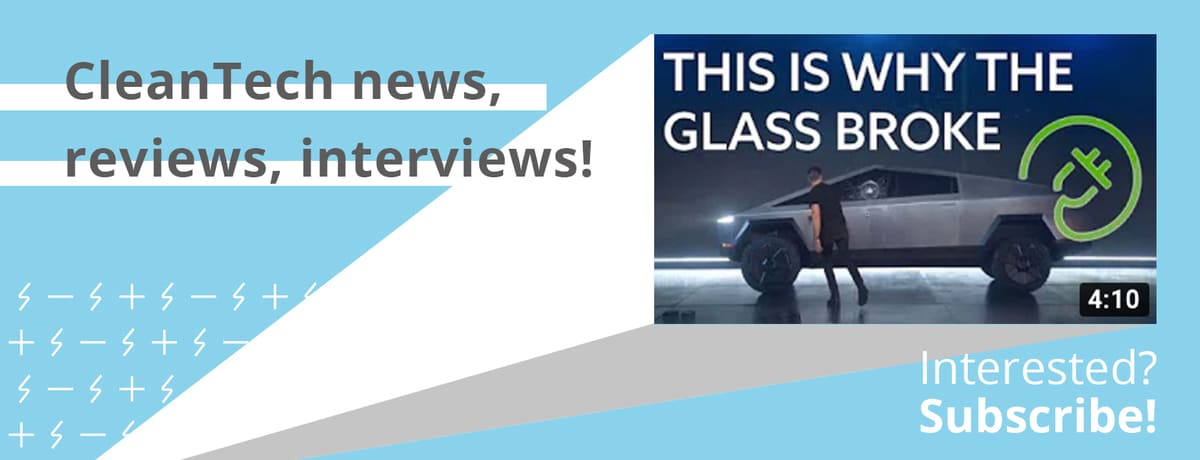There’s something that’s been bugging me the last couple of days on social media. I don’t mean bugging me a little. I also don’t mean bugging me like Steve Urkel bugs Carl Winslow on Family Matters (in other words, a lot). It’s more like those annoying street preachers who call people to repentance with megaphones during rush hour. You don’t care what they think, because they’re stupid, but at the same time, you hear the same stuff over and over and over until you’d really just like to tell them where to stuff the megaphone.
I’ve been trying to not write too many articles about the Tesla Stans lately, but this little tidbit of non-wisdom I keep seeing seems worth writing about because it’s just so economically unjust but comes packaged as a injustice against Tesla and its buyers. So, I’m going to end 2022 with a bang and describe where the megaphones should be stored.
The Complaining Seems Legitimate On The Surface
The thing Tesla Stans and “HODLers” are crying about this time is that Uncle Sam isn’t being nice about tax credits from the Inflation Reduction Act. These complaints are nothing new, and Tesla fans have (often rightfully) been complaining about the dumb things in that law since day one, but this time they’re up in everyone’s Twitter grille about the caps on vehicle prices.
For example, the 5 seat version of the Tesla Model Y is considered a “car” by the tax collectors, and is thus subject to a $55,000 limit. Sell a Model Y for more than that and you can kiss the tax credits (which will eventually become point-of-sale discounts) goodbye. But the 7-seat version of the vehicle is considered an SUV, and is therefore subject to an $80,000 limit on sales price to qualify for the tax credits. That gives Tesla more breathing room (and room to profit and expand).
It looks like nonsense on the surface, but those caps were put in the law for valid reasons.
Beyond First World Problems
[embedded content]
A while back, any time you complain about any annoyance, some people would bother you that starving children in Africa don’t experience such problems. While something could be legitimately grinding your gears, there was always that guy who would tell you that it’s “first world problems” and that you probably shouldn’t be complaining. After all, you’re so well off, right?
Yeah, that crap annoyed me, too. But I think it’s entirely appropriate in this case because we aren’t talking about the maid cleaning your master bathroom at an inconvenient time. We’re talking about $80,000 cars and an expectation that the government should be subsidizing those cars.
The average American paid around $40,000 when we weren’t dealing with a weird economy. Even then, with car prices sky high at dealers, the average new car price was still under $50,000. And consider that this was the average, not the bottom. For $50,000 to be the average, around half of the population pays less for their car.
To someone living in Los Angeles or San Francisco, $80,000 might not seem like a lot, but that’s more than I paid for my house in New Mexico, and that was in 2021. I recently bought the most expensive car I’ve ever bought, and that was $32,000 for a Chevy Bolt EUV. Many of my neighbors spent just a few thousand for their cars, and they’re too worried about natural gas prices and finding wood to burn to stay warm this winter.
Should those of us paying a little tax in New Mexico, who survive through frugality, have to watch some of those dollars go to some jerk in Phoenix or L.A. who just couldn’t even survive without an $80,000 car? I’m sorry, but NO! You shouldn’t be getting taxpayer money to buy a luxury car in 2023. EV technology has matured, and now it’s time to get them into every driveway, not put a second or third one in yours.
I know New Mexico is about as poor of a U.S. state as you can get, but there’s a lot of room for a decent EV under fifty five thousand bucks, so you don’t have to drive a penalty box. Even my “cheap” Bolt EUV has leather seats, heated and cooled. It has plenty of other nice things teenage me never thought she’d have in a car (or could imagine). But, I get that people don’t like Bolt charging speeds. The Volkswagen ID.4, the Hyundai Ioniq 5, and the Kia EV6 are all very, very nice EVs for under the $55,000 cap.
So, no, I’m not suggesting everyone drive a Bolt, or worse, a LEAF. There are plenty of nicer EVs to be had for under $55,000. It’s not a hard target for an automaker to hit these days.
But, despite plenty of room under the price cap, I’m seeing a bunch of Tesla shareholders complaining on social media like someone is twisting their arms. I get that 2022 has been a rough year for people who bet everything on Elon, but it’s not my fault that Don Quixote Musk has been out tilting at every political windmill lately and kicking every hornet’s nest of controversy he could find on Twitter. You bet on the guy, despite some CleanTechnica writers warning you, and now you’ve got to lie in the bed you made.
You certainly shouldn’t be expecting taxpayers to subsidize bloated luxury sedans disguised as SUVs to help bail you out of the mess you’re in with those stonks, when Tesla had ample opportunity to focus on cheaper EVs like the other manufacturers did. And if you’re the buyer of said bloated luxury sedan, you shouldn’t get money from the pocket of a frugal New Mexican who bought a Bolt without any tax credits.
I know this sounds harsh, but that’s life for people in the bottom half. When a car is over $55,000, we just don’t get one at all. The same goes for many other luxury items out of our reach, like high-end MacBooks, the top-end iPhone with 26 cameras, or the million-dollar house in sunny Southern California.
The argument used to hold that those tax credits were needed for luxury EVs because the technology needed to be developed and go into mass production so the rest of us could afford one. But it’s not 2015 anymore. The technology is there to produce EVs (and nice ones) for under $55,000. I don’t want to see people complaining about how the government won’t help pay for more expensive Model Y crossovers.
Featured image: Tesla Model Y (press image courtesy of Tesla).
Complete our 2022 CleanTechnica reader survey for a chance to win an electric bike.
Appreciate CleanTechnica’s originality and cleantech news coverage? Consider becoming a CleanTechnica Member, Supporter, Technician, or Ambassador — or a patron on Patreon.
Don’t want to miss a cleantech story? Sign up for daily news updates from CleanTechnica on email. Or follow us on Google News!
Have a tip for CleanTechnica, want to advertise, or want to suggest a guest for our CleanTech Talk podcast? Contact us here.
Advertisement
- SEO Powered Content & PR Distribution. Get Amplified Today.
- Platoblockchain. Web3 Metaverse Intelligence. Knowledge Amplified. Access Here.
- Source: https://cleantechnica.com/2023/01/01/dont-blame-congress-for-tax-credit-limits-blame-tesla-for-its-expensive-evs/





